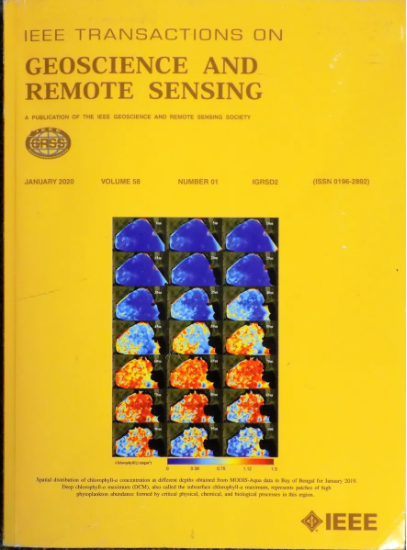Estimating Morphological Parameters of Insects in Nonhorizontal Flight Attitudes Based on Scattering Matrix Reconstruction
IF 8.6
1区 地球科学
Q1 ENGINEERING, ELECTRICAL & ELECTRONIC
IEEE Transactions on Geoscience and Remote Sensing
Pub Date : 2025-01-10
DOI:10.1109/TGRS.2025.3528047
引用次数: 0
Abstract
For vertical-looking radars (VLRs), it is typically assumed that insects maintain a steady and approximately horizontal flight attitude as they pass through the radar beam, allowing for the estimation of insect morphological parameters by measuring the radar cross section (RCS) for a ventral aspect. However, for tracking radars, which dynamically track and monitor insects, the attitude of the insect relative to the radar beam constantly changes. This dynamic change in attitude renders traditional insect morphological parameter estimation methods based on the ventral-aspect RCS ineffective. This article proposes a novel method for estimating the morphological parameters of insects in nonhorizontal flight attitudes. By determining the azimuth and pitch angles of the insect’s body axis relative to the radar antenna reference coordinate system and reconstructing the scattering matrix (SM) of the insect from nonhorizontal attitudes to a horizontal attitude, we achieve the estimation of morphological parameters for insects in nonhorizontal attitudes. The effectiveness of the proposed method is validated using a fully polarimetric multiangle observation dataset of 33 insects from six species measured in a microwave anechoic chamber. The mean relative errors (MREs) in estimating the mass and length of the insects across 20 different observation angles are 20.06% and 12.85%, respectively. Compared to estimates obtained without making the correction, the accuracy of mass and body length estimation is improved by 19.80% and 13.79%, respectively.基于散射矩阵重构的昆虫非水平飞行姿态形态参数估计
对于垂直雷达(VLRs),通常假设昆虫在通过雷达波束时保持稳定和近似水平的飞行姿态,从而通过测量雷达横截面(RCS)来估计昆虫的腹侧形态参数。然而,对于动态跟踪和监测昆虫的跟踪雷达来说,昆虫相对于雷达波束的姿态是不断变化的。这种姿态的动态变化使得基于腹向RCS的传统昆虫形态参数估计方法失效。提出了一种估算昆虫非水平飞行姿态形态参数的新方法。通过确定昆虫身体轴线相对于雷达天线参考坐标系的方位角和俯仰角,重构昆虫从非水平姿态到水平姿态的散射矩阵,实现了昆虫非水平姿态形态参数的估计。利用微波消声室中6种33只昆虫的全偏振多角度观测数据验证了该方法的有效性。20个不同观测角度对昆虫质量和长度的平均相对误差(MREs)分别为20.06%和12.85%。与未进行校正的估计结果相比,质量和体长的估计精度分别提高了19.80%和13.79%。
本文章由计算机程序翻译,如有差异,请以英文原文为准。
求助全文
约1分钟内获得全文
求助全文
来源期刊

IEEE Transactions on Geoscience and Remote Sensing
工程技术-地球化学与地球物理
CiteScore
11.50
自引率
28.00%
发文量
1912
审稿时长
4.0 months
期刊介绍:
IEEE Transactions on Geoscience and Remote Sensing (TGRS) is a monthly publication that focuses on the theory, concepts, and techniques of science and engineering as applied to sensing the land, oceans, atmosphere, and space; and the processing, interpretation, and dissemination of this information.
 求助内容:
求助内容: 应助结果提醒方式:
应助结果提醒方式:


